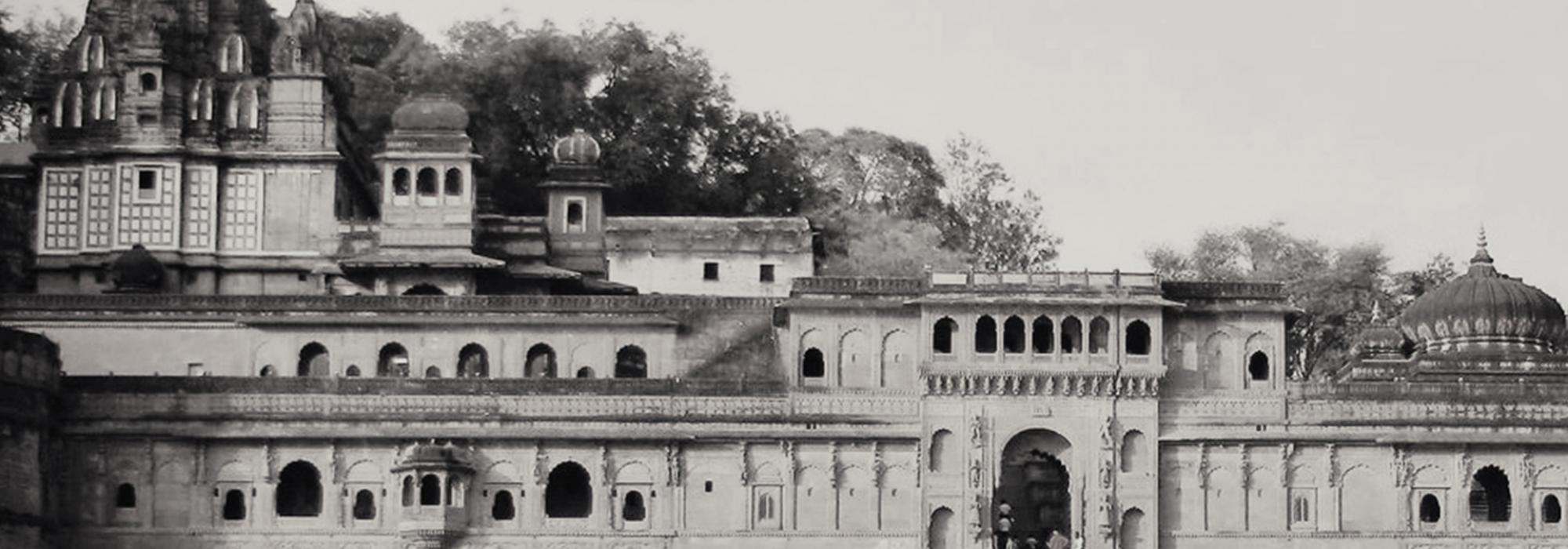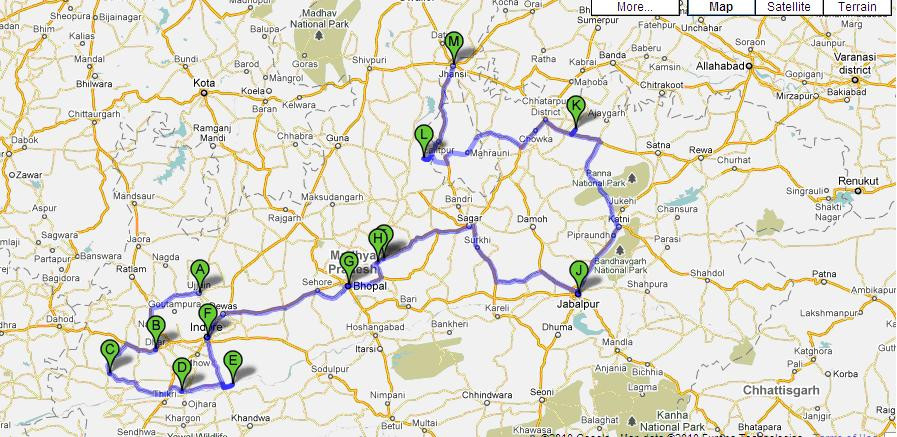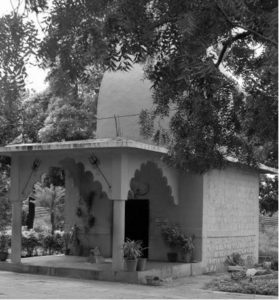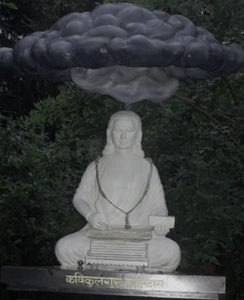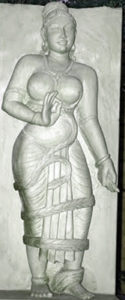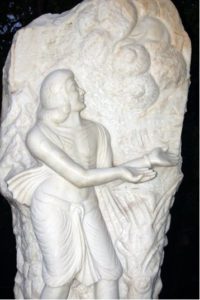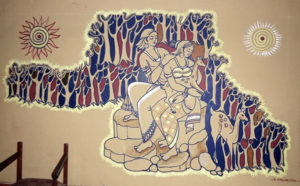3-11 September 2009
Places visited – Ujjain, Dhar, Bagh caves, Maheshwar, Omkareshwar, Indore, Bhopal, Sanchi, Udaigiri caves, Vidisha, Udayapura, Beda Ghat, Khajuraho, Markhera, and Deogarh (in order of visiting).
[contextly_sidebar id="a68Lz1J3e5DuChyNAJMbSi2CJliI78dD"]
Dramatis personae
RG: The less I try to say the better for me. Whatever I try to say would only betray my foolishness.
JM: A serious, philosophical person with a great sense of humor. On one side is his deep Vedantic thought and on another is a wonderful wit that he delivers in a vernacular jargon of Dakshina Kannada. The most lively of all in the whole trip and the most enjoyable company. His Lonely Planet Guide was invaluable.
CKS: Or Chandru. That’s me. Quietest of the lot. I would look up once in a while on my GPS phone and remind people that we were somewhere in Madhya Pradesh. Free value added service.
C: Or Puttu. My cousin who is younger and shorter than me. That explains the prefix. Our official tour photographer. He flaunted a Nikon DSLR for years but never clicked a worthy photo. Sorry, nothing was worthy of his camera really! If you don’t like the photo, you may blame the weather. And if you like it, please thank the weather. This time, we could thank the weather a great many times.
R: At 6'2", he surely has his head up in the air. With his askance skyward look, he cares a foot (in fact 6) for earthly matters. Carefree (or careless?), witty, deeply agitated about the state of Mother India, poetic in thought (thank goodness it's only in his thought), my college-mate, and colleague for seven years.
V: A phenomenon to us. (Angry) young man of India. Has read the Ramayana in original cover to cover and the complete works of Kalidasa and many other Sanskrit classics in a record time of less than two years. Inspiring. A poet already. Casual and jovial with his no-holds-barred laughter. Incisive in logic, penetrative in analysis. Takes on the world almost with disdain. Keeps his intellect over his emotions.
N: V’s younger brother. Quite his contrast. Smaller in build and softer in demeanor. A warm person. Did the thankless job of keeping accounts for all of us. He’s our colleague too. A great narrator of stories, especially family soaps.
The Journey
This is an attempt to capture some of the memories of our trip to Madhya Pradesh. I wish to preserve at least some of the memories in this writing, so that reading this in posterity would stimulate that memory to excite and rejuvenate us. I cannot say or write enough of how this trip was transformative for many of us. What a perspective of India it gave us!
Since the time of our association with RG, we have been deeply swayed by the poetry, sculpture, arts and history, especially of the classical period – the golden age of the Guptas and the Golden age of Bharata too. It was always a cherished dream to visit those places that this classical era had bestowed such heightened cultural importance upon.
Our tour of MP began on the evening of 3rd September when we boarded the flight to Delhi from Bangalore. As the flight took off and meandered through the clouds in the high skies, the casual banter in the flight was slowly setting the tone for the trip. Conversations hopped and skipped from jokes to poetry to philosophy, from below the belt to over the head, interrupted only by the savories we had brought along. The conversations then culminated in the recitation of the Meghaduta. It was time to land, but the Meghaduta kept us high. Closer to the cloud than the yaksha might have been, RG and C recollected the whole of the purva megha seeming to remind the clouds too of the message of the yaksha. The clouds did indeed take the message. And this time we were witness to the sojourn of the clouds throughout our trip of Madhya Bharatha! Kalidasa and particularly the Meghaduta were to become the guiding theme throughout the trip. Alighting at Delhi, we took the taxis to the Nizamabad railway station.
We had little time to board the Indore express. While we were helping ourselves to a quick dinner at the food court outside the station, heavy rains began to lash. We quickly gobbled the few morsels of food and rushed to the station striving to shield ourselves from the downpour. We settled ourselves down in our seats just as the train began to move. Our first destination was Ujjain. We reached Ujjain at around 10 am after an overnight journey. The weather was cloudy and pleasant as we alighted on the sacred soil of Ujjain.
Ujjain
We were greeted by Paramar with his brand new air-conditioned Tempo Traveller (TT), which became our home as we covered 2,150 kms over the next seven days. We first satiated our hunger with delicious jalebis, samosas and powa. This became our de facto breakfast almost throughout the trip. And we enjoyed it every time. We checked in at the Grand Tower hotel, refreshed ourselves with a quick bath and set out to go around Ujjaini. Our first stop was the ashram of Sandipani.
We loitered around the ashram, went around the kalyani, saw a few sculptures around, listened intently to the accompanying commentary by RG, realized what the dhatura looks like, petted the benign white cow (Gomati) tethered to a tree, relaxed under the shade of the banyan tree and allowed the feeling of fulfillment and quietude to descend on us. We quickly felt enough of the tranquil, for we had already ordered a good meal at the dhaba just outside the ashram. After a sumptuous meal at the dhaba, we proceeded next to the Kalabhairava temple, famous for the deity's propensity for hard liquor, of the kind of rum, whisky, and brandy. People queuing up in utmost devotion with flowers, agarbati, and brandy in their hands was an amusing sight. Amusing though it seemed, the magnanimity of sanatana dharma in its ability to elevate even liquor to divinity did not fail to strike us. We went next to the Bhartrahari caves.
These caves are on the bank of the river Shipra. Though the caves themselves were not particularly of any great interest, the stories that are associated with them rendered us to remember and relate to the place. RG narrated to us the fascinating story of Bhartrhari. The narration starts with the story of Chandra Sharma. The story unfolds with Chandra Sharma resting under a banyan tree on the banks of the Narmada. This tree was haunted by a brahma rakshasa who had the wont of posing a question on grammar to whoever came there. A wrong answer simply meant that the rakshasa helped himself to a good meal! When the same question was posed to Chandra Sharma, he gave the right answer and the rakshasa volunteered to impart the mahabhashya to him. Chandra Sharma then took down notes on the leaves of the banyan with his own blood. After a few days, perhaps after the ‘knowledge transfer’ was complete, Chandra Sharma sapped of all energy collapsed in front of a shudra’s house. She then took care of him for many days until he regained enough strength to go and meet the king. There, he was persuaded to marry the daughters of the king, the minister, and the commander-in chief. He later married even the shudra woman who had nursed him back to health. Thus, from a brahmana, a kshatriya, a vaishya, and a shudra were born Vararuchi, Vikramaditya, Bhatti, and Bhartrahari in that order. Bhartrahari became the king later, composed the Shringara shataka, was disabused of love by the treachery (rather, debauchery) of his wife, renounced the throne, became a sanyasi and composed the Vairagya shataka. He composed the Niti shataka too. When he renounced the throne, his brother Vikramaditya ruled the kingdom with Bhatti as the minister. Apart from the three shatakas, he also composed a scholarly work on Sanskrit grammar. His father’s scholarship in grammar that he had gained from the brahma rakshasa found culmination in Bhartrhari’s work – the Vakyapadiya. His brother Bhatti also has composed a poetic work called Ravana vadha with the purpose of highlighting grammatical usages, serving as a poetic guide to grammar. (See ‘Bhartrahari’s Three Shatakam’, Rashtriya Samskrit Sansthan, Ed. Gopinath Kaviraj). Chandra Sharma himself took up sanyasa and became Govinda Bhagavadpada, the guru of Adi Shankara.
Fascinating as the story was, we stood for a while in our tracks watching the Shipra, its soft flow transporting us back from the seventh century. And shading us from the late afternoon sun was the banyan tree – the abode of the brahma rakshasa. We remembered the line 'शिप्रावातः प्रियतम इव प्रार्थनाचाटुकारः' (The morning breeze on the river Shipra is flirting like a lover.)
Our next stop was the Mahakaleshvara temple. Like the megha, we too heeded the advice of the yaksha and decided to have the darshana of Mahakala in the evening. It was V’s wish and insistence too. We set a time for the darshana of the timeless. So we were there, in the temple at around 5 pm. We joined the queue and the chorus of "Har har mahadev" and "Jai mahakal." In about twenty minutes, we stood inside the garbhagudi, in front of Mahakala. Like in most North Indian temples, we are allowed to touch the murti of God and offer our devotion in whatever way we wished. What each of us felt was our own. For me and perhaps many others, there was only one prayer. We knew the constraints within which we were making this trip possible. We only prayed that the constraints would not become obstacles. And they did not. Mahakala had indeed bestowed his full blessings on us. After a heart-filling darshana, we trudged out of the garbhagudi. The first day of our trip was already so fulfilling and there was still a lot more left of the day. As we walked past the main temple towards the exit, we were stunned in our tracks by an unnerving loud roar of thunder. It was as loud a thunder as any of us had ever heard. The hundreds and thousands of birds perched atop the trees scattered across in panic, bespeckling the dark sky. We shot to the nearest mantapa and took refuge there. The warning was short. The skies opened up in an unrestrained downpour. The clouds bowed low to mahakala. The megha had listened to the yaksha’s message. And this time, we bore testimony to the cloud’s integrity. The cloud had thundered over mahakala to give a fulfillment to its voice. Meghaduta was being enacted for an audience.
अप्यन्यस्मिञ्जलधर महाकालमासाद्य कालॆ
स्थातव्यं ते नयनविषयं यावदत्यॆति भानुः ।
कुर्वन् संध्याबलिपटहतां शूलिनः श्लाघनीयां
आमन्द्राणां फलमविकलं लप्स्यसे घर्जितानाम् ॥
(In another visit of yours, O my friend! you have to stay till the twilight at the abode of Mahakala. You should also roar with your thunder like a bass drum that’s meant for the evening’s musical offerings at the temple. This I am sure would foster great virtue in you and give fulfillment to your voice.)
A deep sense of gratification filled us as the sound of thunder echoed the power of poetry. Had it not been for the Meghaduta, thunder would have just been sound and the rains just water. The poetry, 1,500 years old, dissolved in our hearts in the abode of the timeless mahakala. The downpour continued, the cloud abiding by the advice of the yaksha – ‘sthatavyam’. We stood there too under the canopy of the yajnashala as the evening sun slowly began to set on the horizon and the rains began to subside too.
We then left and headed towards the Kalidasa academy near the Ujjain university. The academy is housed in a beautifully wooded surrounding with a huge open field that’s used as an open-air theatre. The rains too had rendered a special aura to the place. At the entrance is a beautiful marble statue of Kalidasa sitting meditatively in a cross legged posture and etching ‘vagarthaviva samprkthau’. We bowed ourselves to Kalidasa, remembering the verse, पदवीं कालिदासस्य ललितां मृदुलैः पदैः । न शक्नुवन्त्यहॊ गन्तुं पश्यन्तॊऽपि कवीश्वराः ॥ This verse employs a pun that simultaneously brings out the coveted position (also means 'the way,' padavim) as evidently seen in the footprints (pada means both 'footprints' and 'verse') that are tender and beautiful (mrdulaih padaih), of Kalidasa, a great master in the art of poetry. It also brings home the difficulty in following his footprints in the way of poetic excellence. Alas, even the great poets are unable to follow his path in spite of it being so evident!
We photographed ourselves with the kavikulaguru and then went into the academy. It is a nice place with many sculptures of the different themes from Kalidasa’s works and the walls too are painted with such themes. For each of the sculpture and the paintings RG cited the original shloka that the work represented. Here are a few examples:
तन्वी मेघजलार्द्रपल्लवतया धौताधरेवाश्रुभिः
शून्येवाभरणैः स्वकालविरहाद्विश्रान्तपुष्पोद्गमा ।
चिन्तामौनमिवास्थिता मधुलिहां शब्दैर्विना लक्ष्यते
चण्डी मामवधूय पादपतितं जातानुतापेव ॥
- विक्रमोर्वशीयम् (४.४७)
Drenched in the rain drops, this creeper is seen like the lover of Pururava, Urvashi in tears. The lack of flowers suggest her plight, she being devoid of jewelry. There are no bumbling bees for there are no flowers. There is therefore silence. This makes Pururava remember Urvashi who had abandoned him in spite of her deep love, at the same time is lamenting for him.
- Vikramorvashiyam 4.47
सोऽनुमान्य हिमवन्तमात्मभू-
रात्मजाविरहदुःखखॆदितम् ।
तत्र तत्र विजहार सम्पतन्
अप्रमेय गतिना ककुद्मता ॥
- कुमारसम्भवम् (८.२१)
Shiva having taken leave from Himavan, his father-in-law who was naturally sullen by the separation from his daughter, took Parvati to Kailasa for a honeymoon trip on the back of Nandi, the renowned Bull.
- Kumarasambhavam 8.21
स प्रत्यग्रैः कुटजकुसमैः कल्पितार्घाय तस्मै
प्रीतः प्रीतिप्रमुखवचनं स्वागतं व्याजहार ॥
- मेघदूतम् (१.४)
Yaksha pleased with the megha’s arrival that could well be his messenger, welcomed it with affectionate words.
- Meghadutam 1.4
Our first day of the trip was moving from high to high. We then headed back to the rooms, freshened up, changed and gathered around RG for a discourse on Kalidasa’s Kumaarasambhava. We enjoyed a few sargas of Shiva-Parvati’s pranaya of their shringara and their honeymoon in the Himalayas. We then turned to the akala vasanta and burning of the lord of love. We were attuning ourselves to visiting Khajuraho.
As the conversation then became casual banter, we decided to go the restaurant for our first dinner in MP. Accompanying all our meals was a bag that RG carried with him closely. He could forget his clothes. His books even. Even his sandhyavandana sahitya mattered little. It seemed he could loose himself, but not this bag. Gojju, uppinakayi, and chatnipudi are precious indeed. But I have to acknowledge, thanks to RG, it was all of us too who enjoyed the gojju and the chatnipudi. How refreshing the parathas were with the gojju and curds! Thanks to Mrs. SA for preparing the chatni-pudi. How many people have to be remembered for making our trip so memorable. The first day ended after dinner, a paan after that and a walk around a few quiet lanes of Ujjain in the night.

